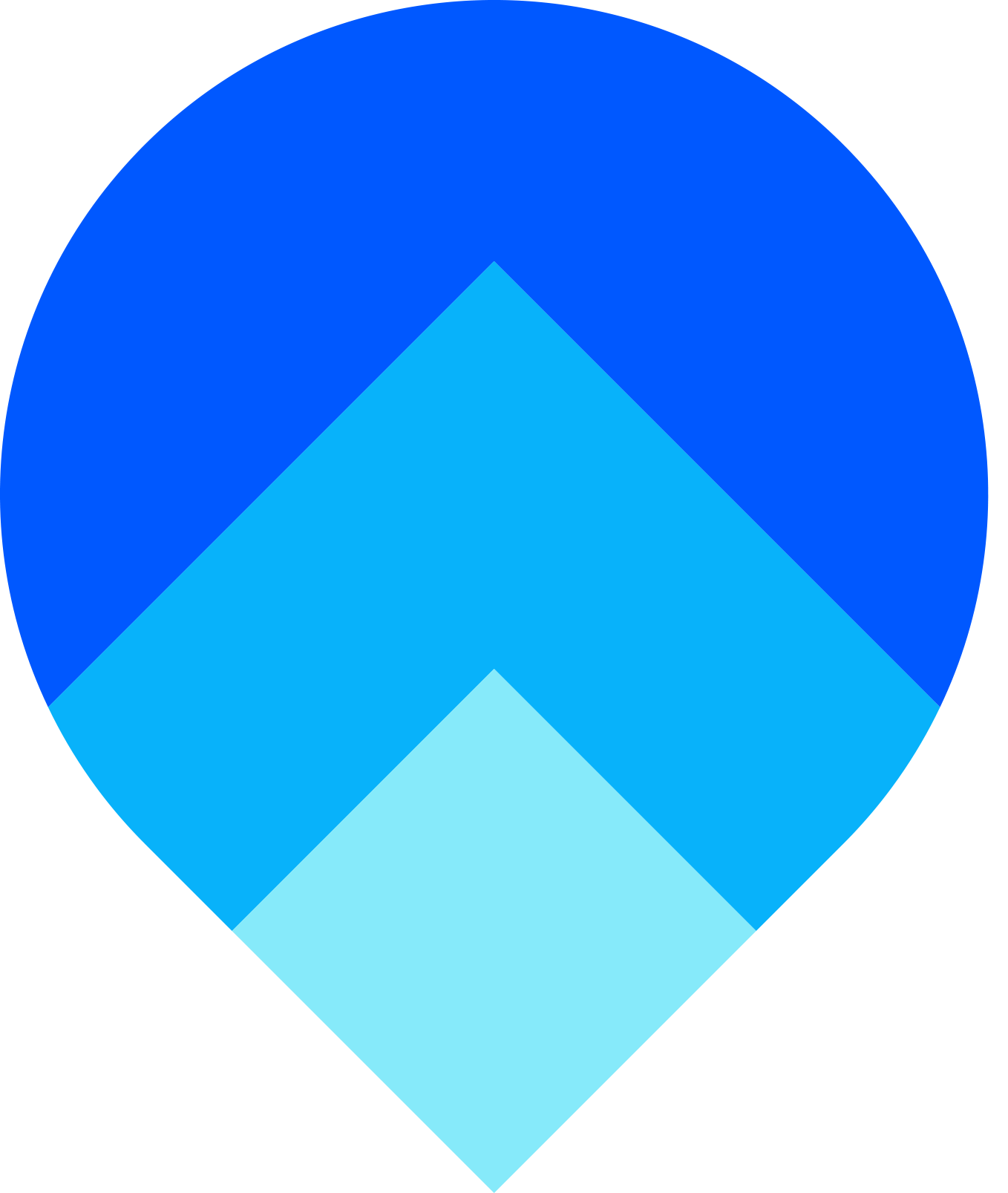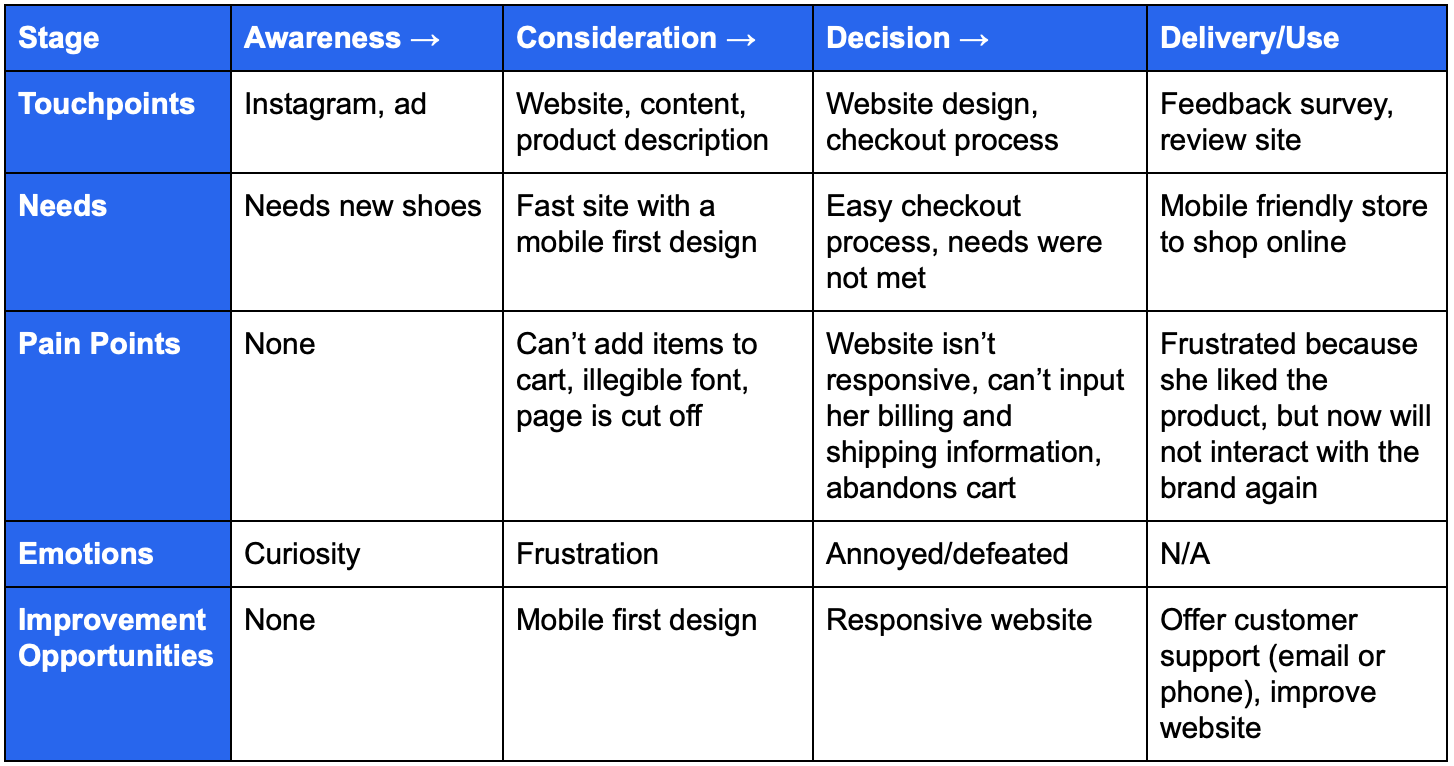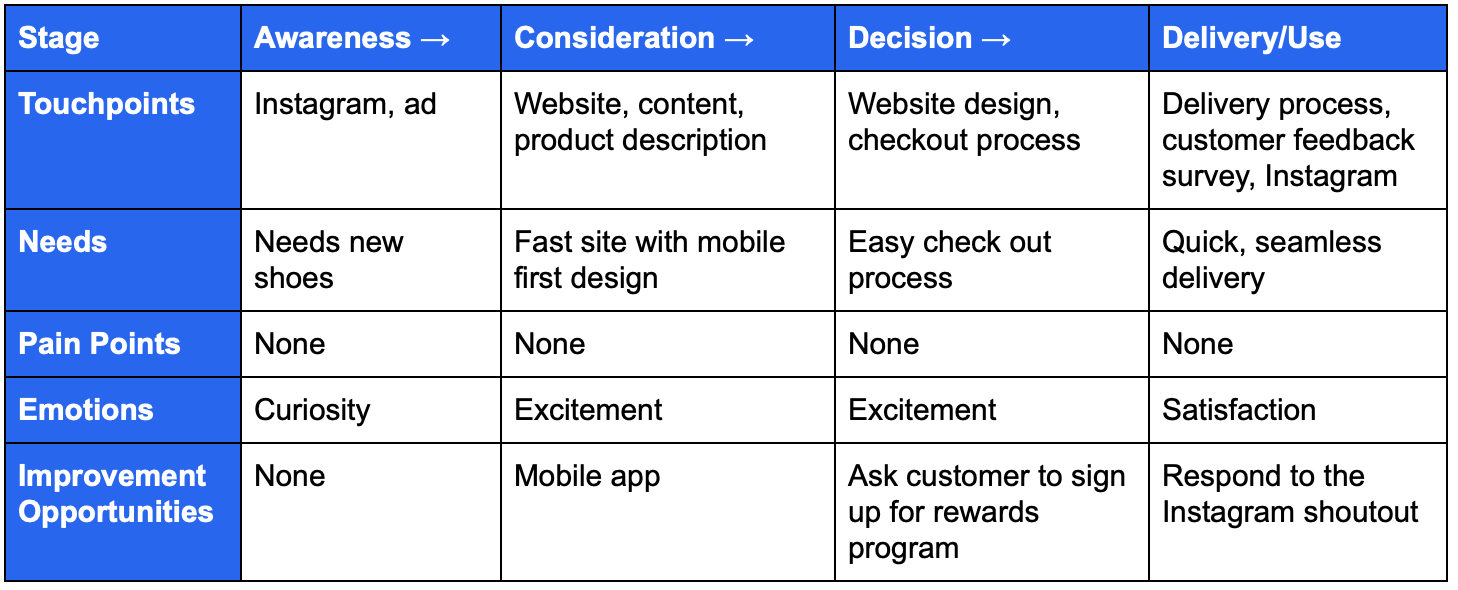Customer Journey Map Example For Local Businesses
If you've ever wondered how to create a bulletproof customer journey (or just want to know what a customer journey is), this is the guide you need.



Do you ever have customers you just can't seem to figure out? They seem interested, they interact with your business often — on and offline — but they never seem to make a purchase? This might be explained by taking a look into their consumer journey and mapping it out.
I’m sure you might be thinking what on earth is a customer journey and what does mapping it mean? A customer journey details a story about getting to know your consumers, understanding their behaviors and their engagement with your brand, and what you can do to enhance their experience and make it better.
A customer journey map is essentially a visual representation of the entire process a customer goes through with your business and all the interactions a consumer has with your brand until they make a purchase decision. That means the very first interaction they have with your business, where they gain awareness, every touchpoint in between, and the final stage where they make a purchase (or not).
Customer journey maps are the most effective way to visualize how a customer interacts with your business and provides you with valuable insight on how to make adjustments to your strategy in order to better reach your customers. It takes a complex process and simplifies it into a visual. A consumer journey map is usually created as a part of a consumer's journey. The map adds a visual element to the written journey.
Although mapping out the journey may sound complicated — and it can be — it starts quite simple. Often times, a customer journey map begins as an Excel sheet that highlights a few important aspects of the journey like significant events or touchpoints, customer motivations, and pain points the user may experience. The information included varies depending on your business, what you are trying to achieve, and the department (sales, customer experience, marketing) the map is being used for. Then, this information is transferred into a detailed visual that depicts a typical customer experience with your business.
Different Types of Customer Journey Maps
Because customer journey maps are used for so many different reasons, it makes sense that there are different kinds. Each map has a unique purpose. Here are the three main types of customer journey maps:
- Current State Mapping;
- Future State Mapping; and
- Day in the Life Mapping.
Current state mapping is the most common type of journey map. It is done from the perspective of customers and it deals with only the present moment. It’s all about the here and now. This kind of map summarizes your customers emotions, behaviors, actions and thoughts as they interact with your business in real time. Creating a current state map allows you, as a business owner, to get an exclusive insight into and understanding of your customers experience and their pain points, which is key in creating a successful strategy to make future improvements to their overall experience. The goal is to be able to create a clear outline of the customer's experience, and then refine the process so that it better suits their needs and wants.
Future state mapping is also done from the perspective of customers and it is used to anticipate what your customers will do, think and feel as they continue to engage with your business in the future. This kind of map is centered around creating a completely new experience for customers and not just improving an old one. Think of it as a template for your customer's ideal journey — the one you hope consumers will take. They’re best suited for communicating your vision for how new products, services, and experiences will function. It used to explore customers desires and hopes, and not just their expectations. The goal here is to create new customer values and experiences.
Much like current state mapping, day in the life mapping illustrates your customers emotions, behaviors, actions and thoughts as they interact with your business today. But, a current state map takes a more extensive approach by considering everything that customers or prospective customers do in their day-to-day life — whether that involves your business or not. This kind of map is best used as a part of the sales process because it enables you to better understand your buyer personas. This illustrates what your customers do in relation to the product or service your business is offering. In other words, if you are able to identify their pain points or unmet needs, you can position and introduce your product or service as a solution.
All three of these customer journey maps are necessary for different reasons. The best approach is to create all of the maps and then intertwine all three in order to paint the most comprehensive picture of your customer's journey.
Understanding the Customer Journey Map
Before you begin creating your customer journey map, you have to figure out what information to include and why it's important. The information you choose to add can vary, but most maps incorporate the following:
- Pain Points
- Touchpoints and channels
- Needs
- Emotions
- Improvement Opportunities
Once you have these established, the next step is to create a rough outline, and then move on to the mapping. It is good practice to create a map for each of your customer personas. Here are two examples of customer journey maps (of the same customer persona):
Customer Journey Mapping Example #1: The Ideal User Experience
A young woman is scrolling on Instagram on her phone and sees an ad for a pair of shoes. She has seen an ad for the store before, but she’s never seen those shoes. The booties caught her eye along with the 30% storewide discount they’re offering. She clicks on the ad and gets directed to the page, which has a mobile first design. The site is easy to navigate and use all on her phone.
She browses a few other items and ends up adding a purse and a dress to her cart along with the original booties. She then proceeds to check out and begins inputting her billing and shipping information without ever needing a computer. She is able to apply the discount and place her order without any issues. The process was seamless and completed within a few minutes all on her phone.
Because everything was so effortless and easy to use, the young woman bookmarks the page and saves it so that she can come back to it at a later date. She even recommends the store to her friends. Once her items arrive, she receives a customer feedback survey asking “How’d we do?” and gives the store a great review. She also decides to take a picture of herself wearing her dress, booties and purse, and posts it to Instagram. She gives a shout out to the store by tagging them and writes a caption raving about how much she loves her new items.
The young woman becomes a loyal customer and brand advocate because of her flawless experience. This outcome makes sense. Roughly 85 percent of individuals who have an excellent customer experience with a business are likely to repurchase from the same company.

Customer Journey Mapping Example #2: Unresponsive Web Design/Abandons Cart
Let’s take that same young woman scrolling through Instagram and implement a less optimal experience. She sees the ad for the shoes and the 30% storewide discount. She clicks on the ad, gets directed to the page. Once she gets taken to the store’s website, she notices that the font is too small to read and half of the page is cut off. She struggles to add the booties to her cart because the buttons are hard to click. She eventually is able to add them and tries to check out. The format is all messed up. She tries to put her information in, but the website is not responding.
After trying a few times, she gives up and returns to Instagram instead. This comes as no surprise. Repeatedly having to put in information increases the chance of a customer abandoning the order. This is frustrating because once the customer gets here, they are ready to check out and make a purchase. The only thing standing in the way is your design.
After abandoning her cart, the woman receives a request to submit a feedback survey asking How’d we do? She ignores it, but looks at reviews of the business. She sees that she is not the only one having these issues and decides not to interact with the brand again.

Both customer journey maps have the same foundation. They begin with the same scenario, but end vastly different. A few simple fixes can go a long way and that can all be understood and even avoided by creating a map. A map is an effective tool to pinpoint where you went wrong and figure out how to improve the user's experience in the future.
By mapping out your customer's journey, you are able to address your customers concerns and get a sense of your customers' motivations — all of their needs and pain points and provide a solution. You will be able to adopt a customer-centric mentality, which enables you to stay focused on your customers and what they desire. It will also make each step of the buying experience easier for prospective leads.
Lately, there has been so much emphasis placed on the customer experience, and for good reason. Customer experience matters — it's what makes you stand out from your competitors and ultimately determines customer satisfaction, retention rates and overall revenue. In fact, roughly 89 percent of companies are competing on the basis of customer experience and it’s predicted that by the end of 2020, customer experience will surpass price and product as the primary brand differentiator.
So, after you map out their journey and get to know your customers well enough, you can leverage that knowledge to personalize every interaction, create the optimal customer experience and watch your business thrive.

%20(1)%20(1).png?width=340&name=Group%2012%20(2)%20(1)%20(1).png)
